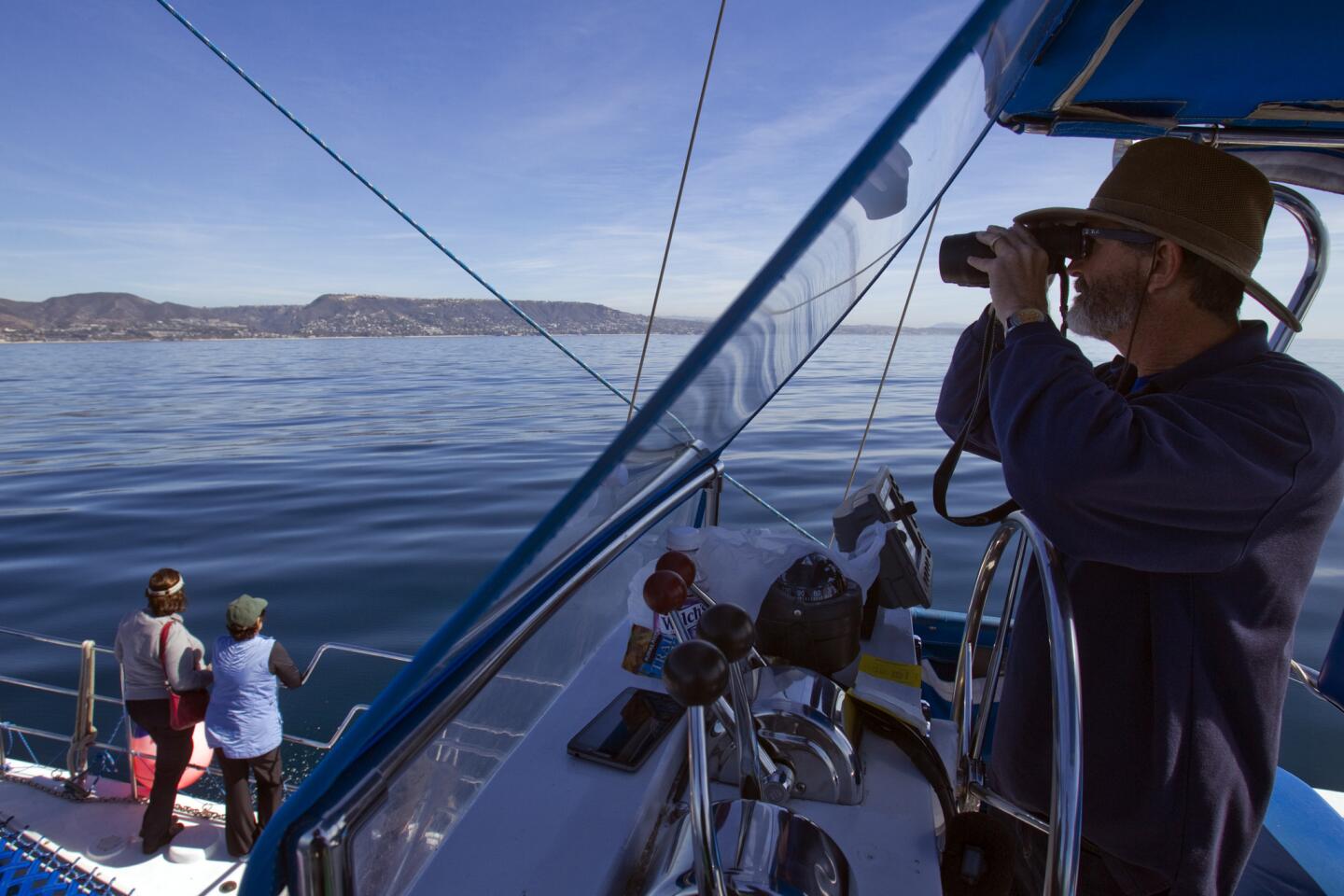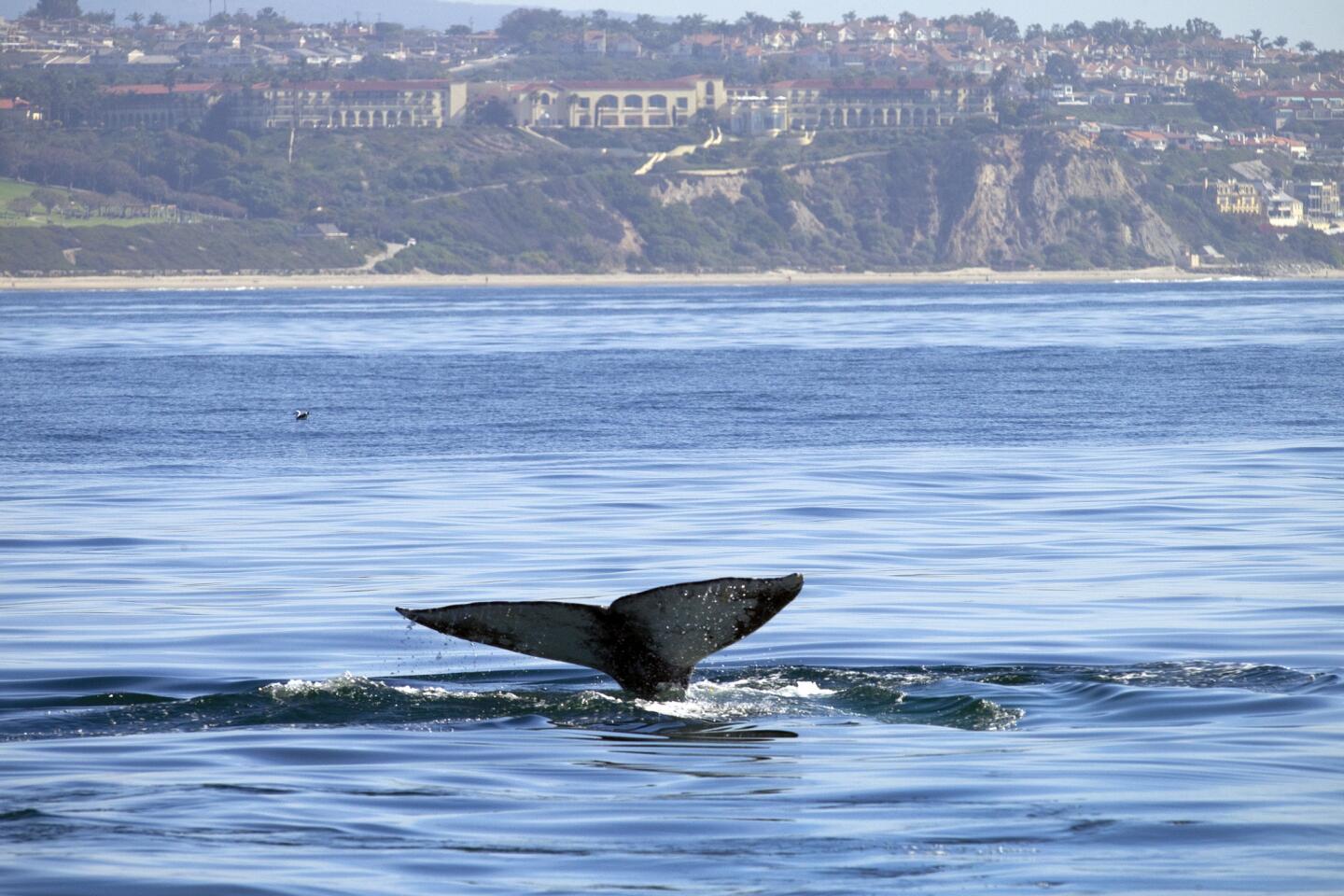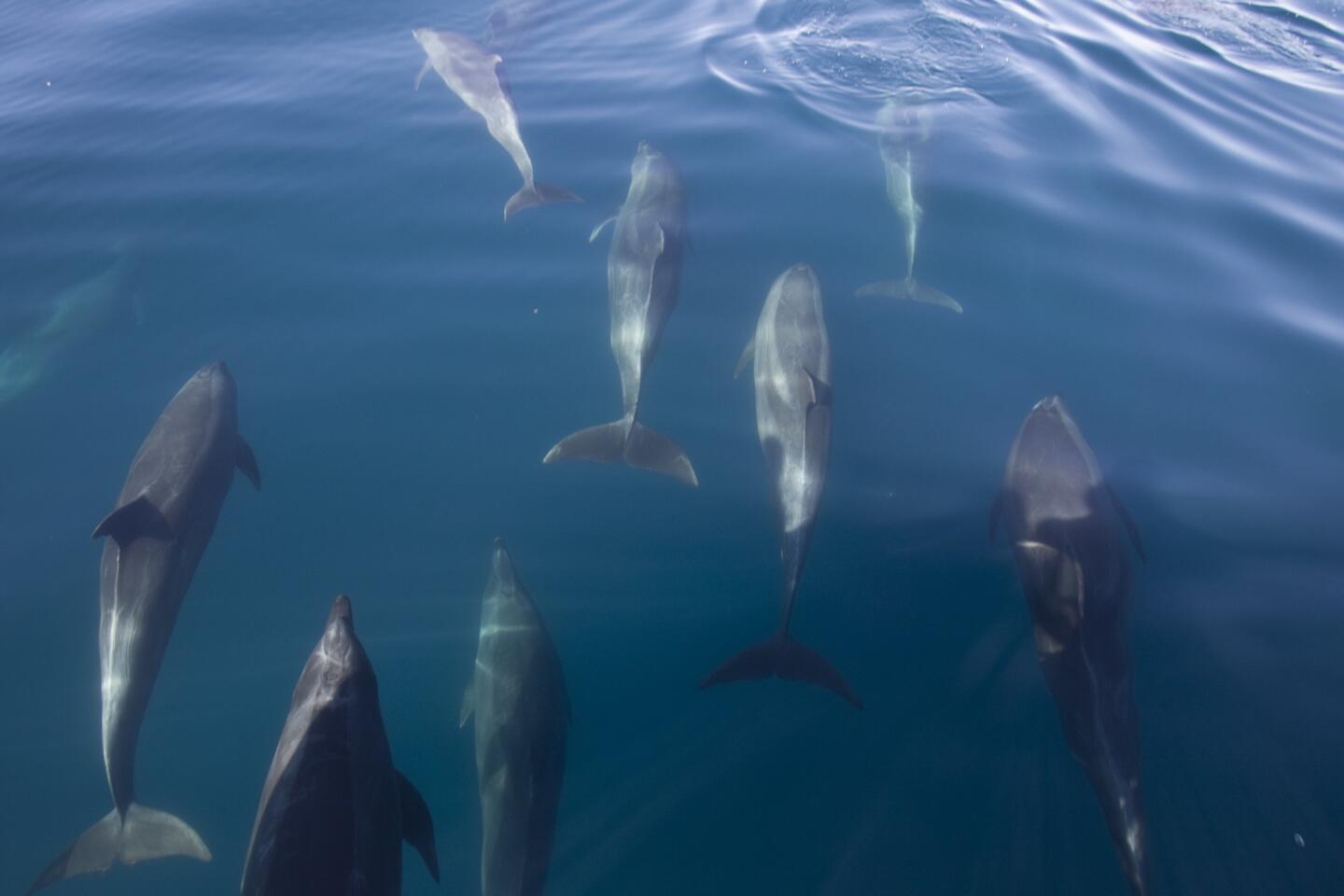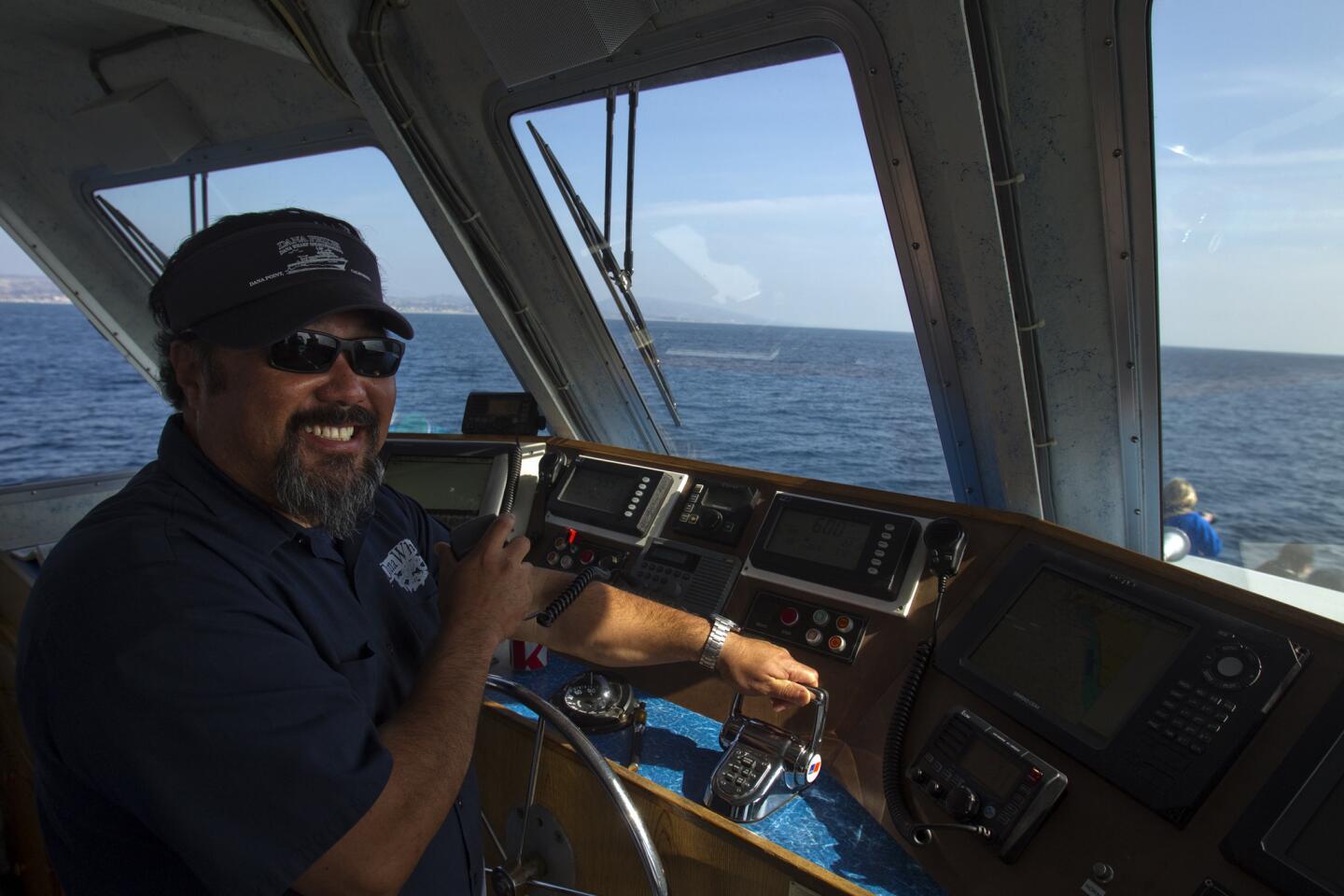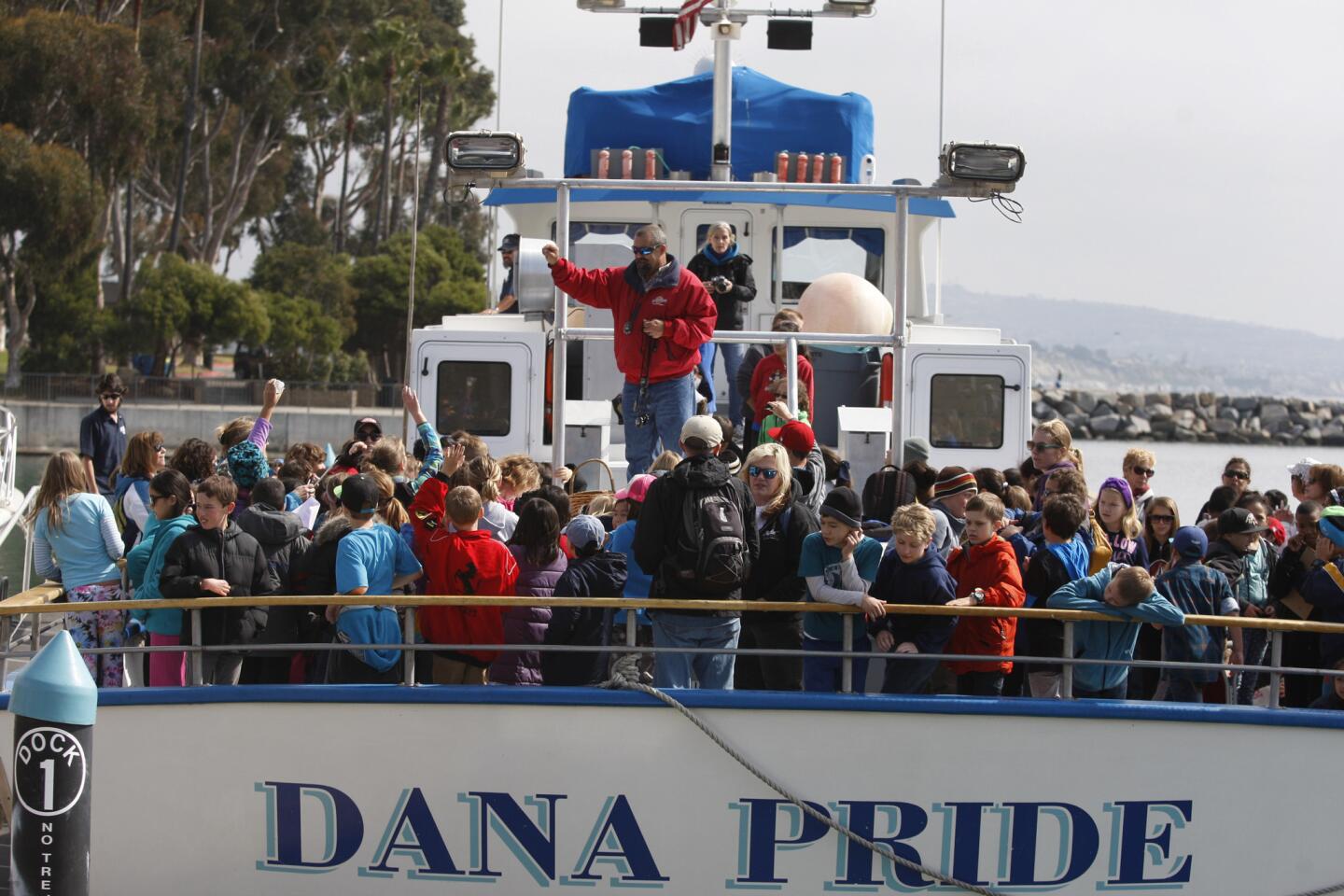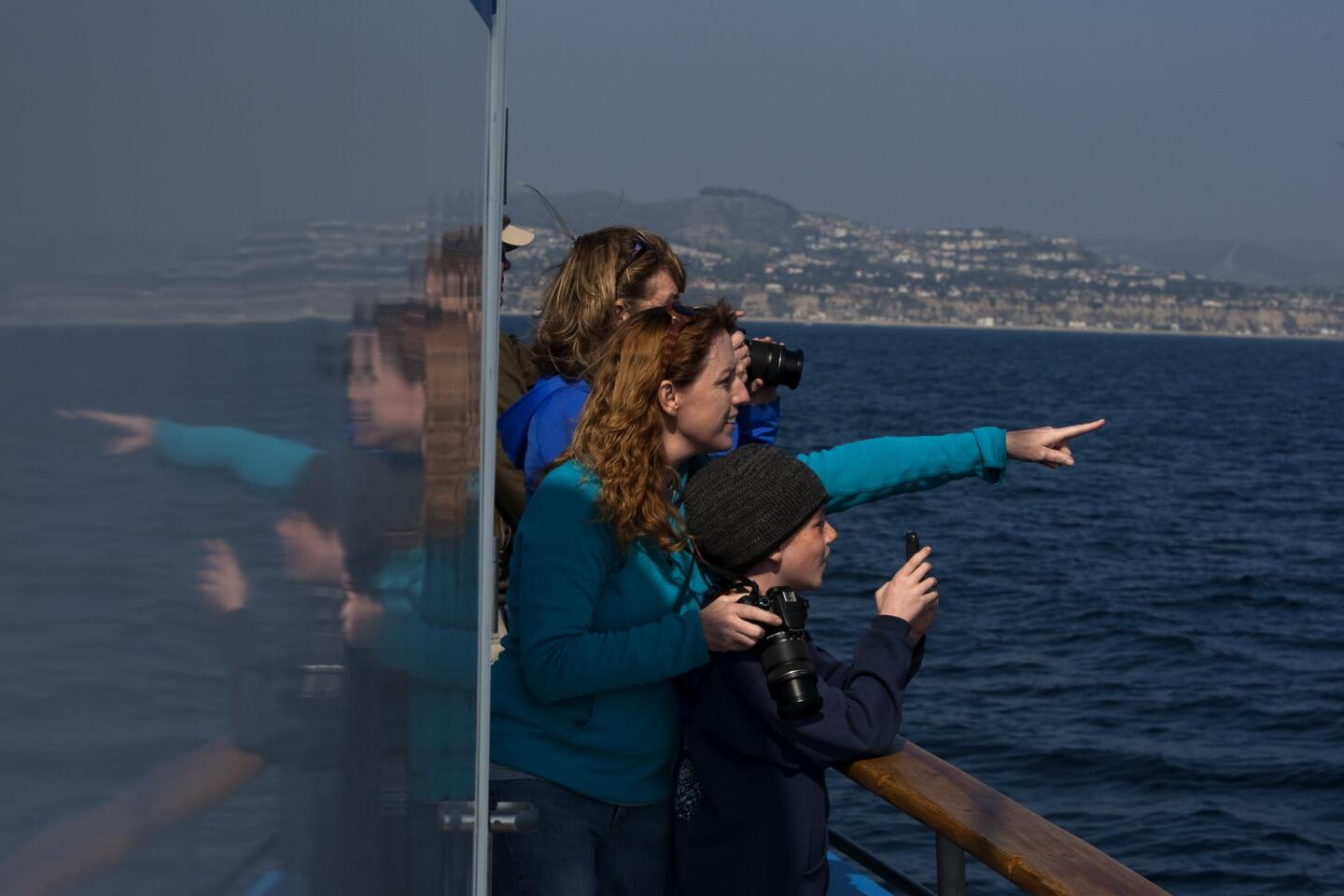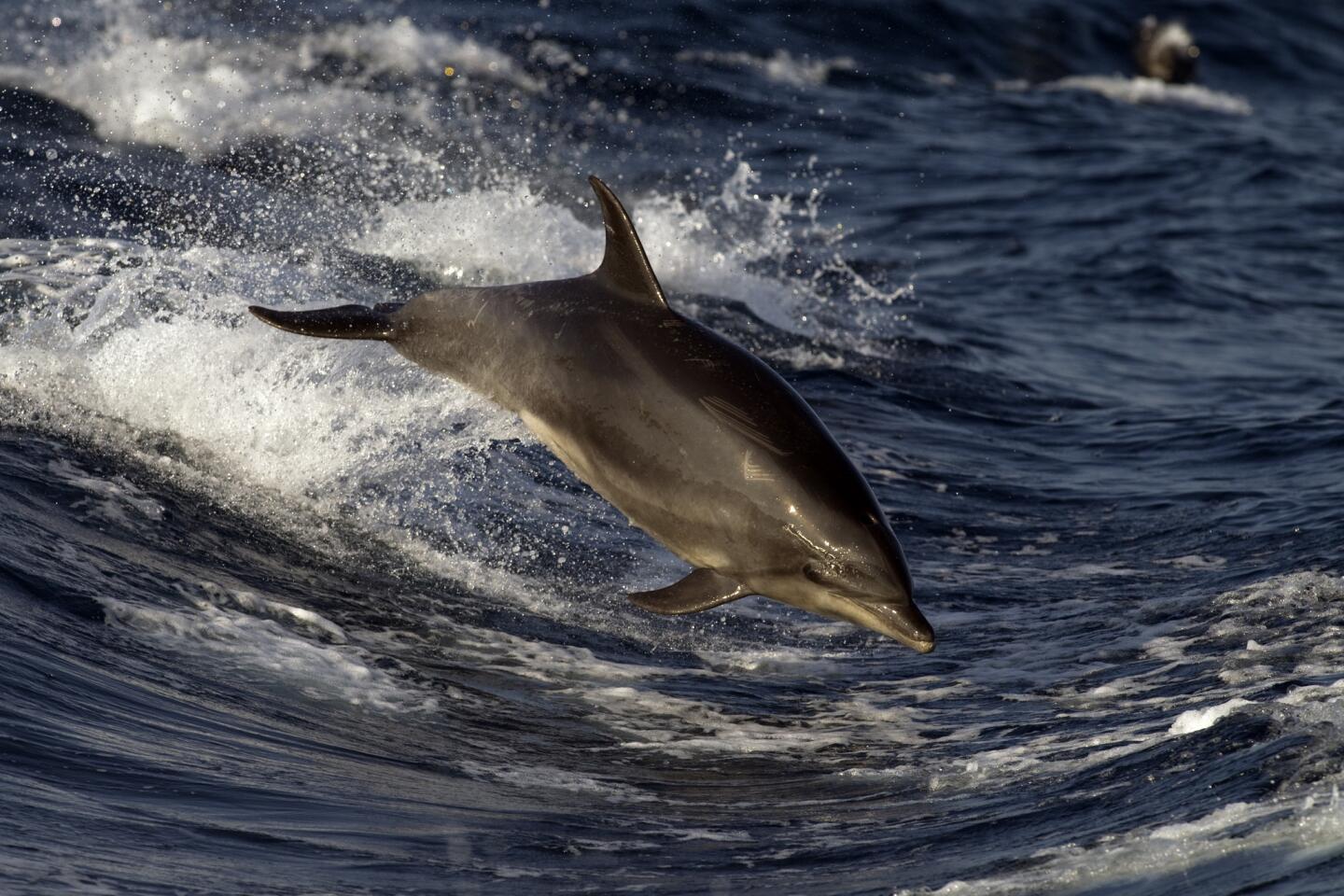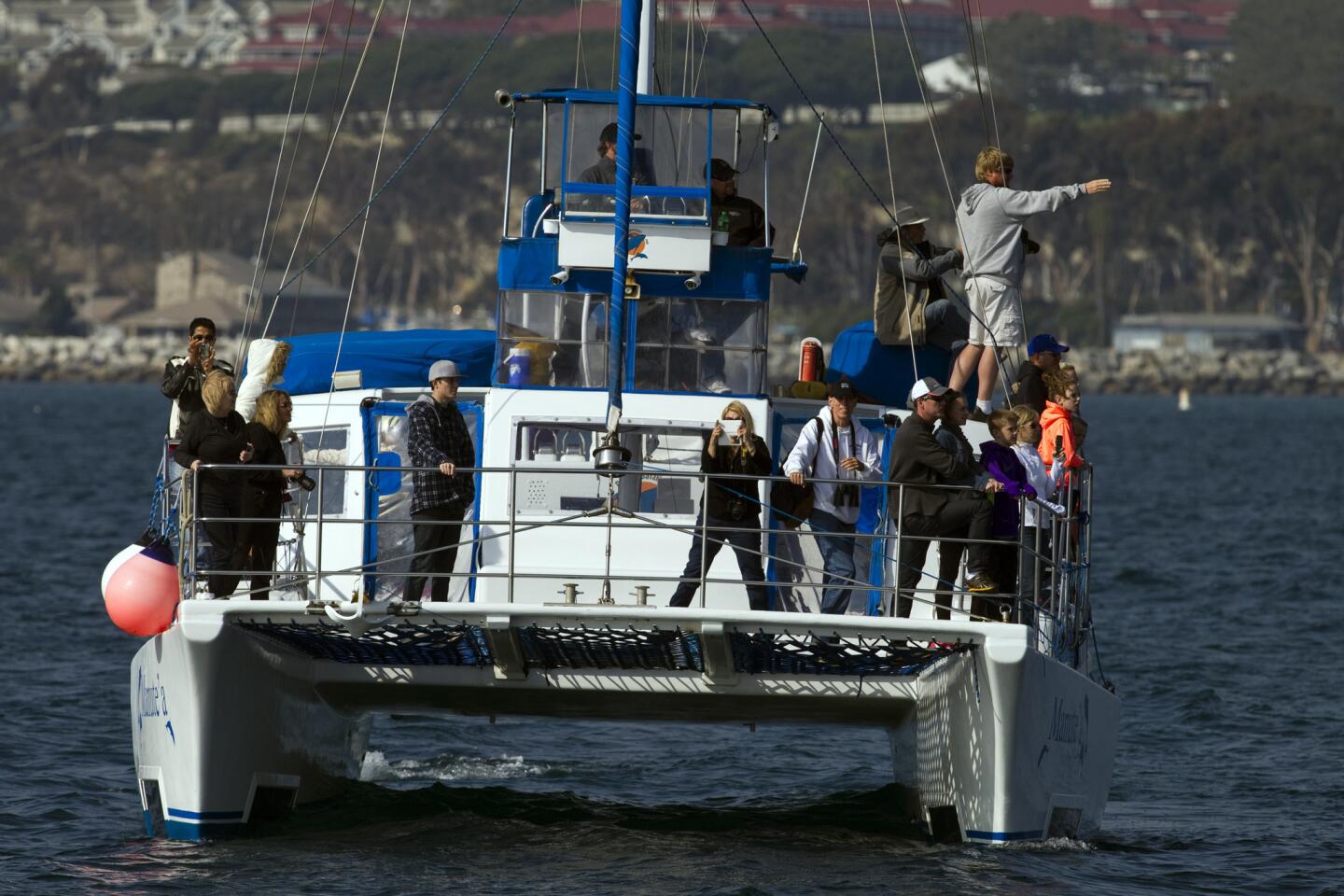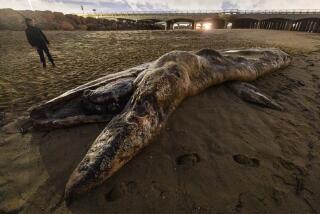Whale watching fleets use drones to capture video, customers
A pair of whale watching fleets fighting for customers in Dana Point Harbor have turned to drones and high-tech cameras to land the most mesmerizing videos and photos possible of the giants mammals that migrate off the Southern California coastline.
The two companies do business from docks only half a mile apart, yet compete over nearly 12 square miles of wide-open sea.
Dave Anderson’s Captain Dave’s Dolphin and Whale Safari, and Donna Kalez’s Dana Wharf Sportfishing and Whale Watching both claim to be the region’s No. 1 operation and the best option for front-row viewing of the magnificent creatures that swim just past the jetties to this picturesque harbor.
PHOTO GALLERY: On the sea with whale watching crew
On both the ocean waves and the airwaves, the rivalry is fierce — what one observer called “a reality show” for the whale-watching set.
When Dana Wharf built a faster boat, Captain Dave attached a pair of glass, V-shaped, underwater pods to the bottom of his boat so riders could view dolphins as they zipped past.
When a Dana Wharf employee posted a video shot using a drone, Captain Dave posted a clip from his quadcopter, a similar unmanned aircraft. His five-minute compilation of scenes captured with the drone has gone viral — getting more than 5 million views.
VIDEO: A dolphin stampede as seen from a drone
Both businesses constantly update their Facebook pages with videos, photos and promotions. (Anderson’s page has 6,255 likes; Kalez’s has 5,926.)
The competition is fierce among the scores of tour companies that dot the Southern California coast, but no more so than in Dana Point.
To make sure they’ re noticed, Anderson and Kalez regularly supply video footage and photos to the media, as well as to outdoor and action sports websites.
“It’s kind of like a reality show,” said Pete Thomas, a writer for GrindTV who also runs his own outdoor sports site and for years was a Times sportswriter. If it lands on the right site, an eye-catching video can lead to millions of views, he said.
Occasionally Dana Wharf and Captain Dave’s will send Thomas footage of the same breaching whale or pod of dolphins. He’ll choose the best one — and usually get caught in the middle, with Anderson or Kalez asking why he didn’t use their video.
“If they have the same thing, they don’t want the other business getting recognition for it,” Thomas said. “Believe me, Donna knows when Dave’s on the news and vice versa.”
Anderson had the sort of day in 2012 that helps cement a reputation in the whale-watching trade.
The evening before, he was told of a gray whale migrating up the coast, its fluke tangled in a fishing net. Anderson and seven volunteers kept tabs on it through the night. The next day they were joined by volunteers from the Pacific Marine Mammal Center and spent eight hours hacking away at the netting.
The rescue effort landed him on Ellen DeGeneres’ talk show, where he recounted how the whale swam up to his boat once the netting had been cut away.
It “opened its mouth, it looked like it was almost saying thank you,” Anderson told DeGeneres. “I probably could’ve touched him if I would’ve reached out.”
In an effort to improve their chances of getting dramatic footage, both started experimenting with attaching GoPro cameras to drones that can hover above a whale thrusting itself from the ocean or a pod of dolphins dancing in the waves.
In January, Frank Brennan, a captain for Dana Wharf, uploaded images of a whale taken with a coptercam, a remotely operated device used for aerial photography.
The clip of a 70-foot fin whale was posted on its Facebook page and days later it was on several news stations, setting off a discussion on how close the unmanned devices should be allowed to get to the whales.
When her captains recently spotted a group of false killer whales — calling it a rare sighting — Kalez quickly tweeted it out, along with the times for the next two charters and the number for her reservation’s line.
Dana Wharf grabbed more headlines this winter when one of its captains got on the radio to warn a 419-foot Navy combat ship that it was headed for two gray whales. The huge vessel halted and altered course.
“It becomes a rush to see who can get on the nightly news,” Kalez said.
Follow Adolfo Flores on Twitter.
More to Read
Start your day right
Sign up for Essential California for news, features and recommendations from the L.A. Times and beyond in your inbox six days a week.
You may occasionally receive promotional content from the Los Angeles Times.
